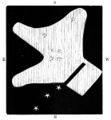Template:Selected anniversaries/June 4: Difference between revisions
No edit summary |
No edit summary |
||
| Line 28: | Line 28: | ||
||1877: Heinrich Otto Wieland born ... chemist and academic, Nobel Prize laureate. Pic. | ||1877: Heinrich Otto Wieland born ... chemist and academic, Nobel Prize laureate. Pic. | ||
||1855: Major Henry C. Wayne departs New York aboard the USS ''Supply'' to procure camels to establish the U.S. Camel Corps. | ||1855: Major Henry C. Wayne departs New York aboard the USS ''Supply'' to procure camels to establish the U.S. Camel Corps. Pic. | ||
||1889: Beno Gutenberg born ... seismologist who made several important contributions to the science. He was a colleague and mentor of Charles Francis Richter at the California Institute of Technology and Richter's collaborator in developing the Richter magnitude scale for measuring an earthquake's magnitude. | ||1889: Beno Gutenberg born ... seismologist who made several important contributions to the science. He was a colleague and mentor of Charles Francis Richter at the California Institute of Technology and Richter's collaborator in developing the Richter magnitude scale for measuring an earthquake's magnitude. | ||
| Line 60: | Line 60: | ||
||1970: Donald Matheson Sutherland dies ... physician and politician, 5th Canadian Minister of National Defence. Pic. | ||1970: Donald Matheson Sutherland dies ... physician and politician, 5th Canadian Minister of National Defence. Pic. | ||
||1973: Maurice René Fréchet dies ... mathematician and academic. | ||1973: Maurice René Fréchet dies ... mathematician and academic. He made major contributions to the topology of point sets and introduced the entire concept of metric spaces. He also made several important contributions to the field of statistics and probability, as well as calculus. His dissertation opened the entire field of functionals on metric spaces and introduced the notion of compactness. Independently of Riesz, he discovered the representation theorem in the space of Lebesgue square integrable functions. Pic. | ||
||1986: Jonathan Pollard pleads guilty to espionage for selling top secret United States military intelligence to Israel. | ||1986: Jonathan Pollard pleads guilty to espionage for selling top secret United States military intelligence to Israel. | ||
Revision as of 13:58, 31 May 2019
1472: Aztec philosopher, warrior, architect, poet, and ruler Nezahualcoyotl dies. He had an experience of an "Unknown, Unknowable Lord of Everywhere" to whom he built an entirely empty temple in which no blood sacrifices of any kind were allowed.
1769: Astronomer Guillaume Le Gentil's hopes are dashed when, after years of struggle, overcast conditions prevent him from making a critical observation.
1783: The Montgolfier brothers give first public demonstration of balloon flight.
1943: Inventor Herman Hollerith uses punched card computation to forecast the position of German submarine U-505 a year in advance, giving the U.S. Navy a strategic advantage in the Second World War.
1944: World War Two: A hunter-killer group of the United States Navy captures the German submarine U-505: The first time a U.S. Navy vessel had captured an enemy vessel at sea since the 19th century.
1992: Mathematician Melvin Dresher (Dreszer) dies. He contributed to game theory, co-developing the game theoretical model of cooperation and conflict known as the Prisoner's dilemma.
2017: Steganographic analysis of Red Spiral 3 accidentally releases the notorious criminal mathematical function Gnotilus.






